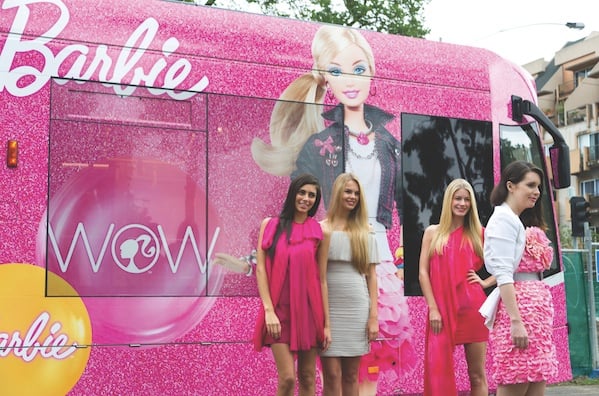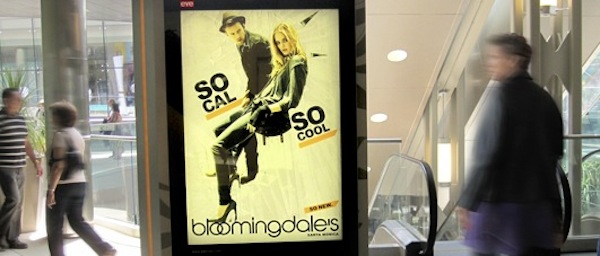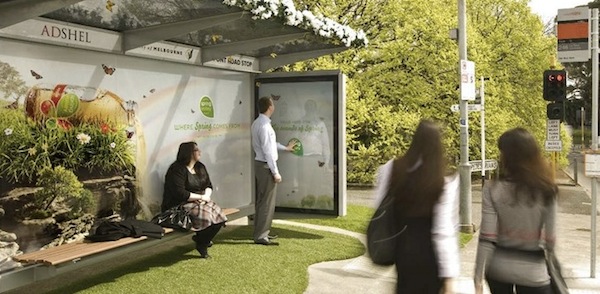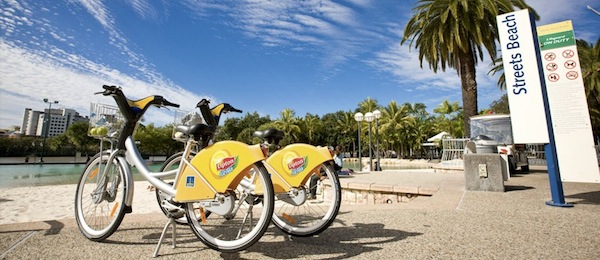Out-of-home: MOVE two years on
Share
It has been two years since MOVE brought standardisation to audience measurement in Australian out-of-home advertising, and the industry hasn’t stopped growing since. But how much of that is down to MOVE? And how much to technological and consumer developments?
At the time this article went to press (for the May issue of Marketing), Australia’s out-of-home (OOH) advertising sector had just clocked up its ninth consecutive quarter of growth in terms of advertising expenditure.
It had been two years since our economy emerged from the global financial crisis, during which time only online advertising’s meteoric rise kept it in positive growth, while all other media sectors were hit hard.
It had also been two years since the Outdoor Media Association (OMA) launched the Measurement of Outdoor Visibility and Exposure (MOVE), the first national audience measurement system for the out-of-home industry in Australia. A planning tool for media buyers and advertisers, MOVE was custom-built for Australian conditions and is world-leading in terms of coverage and depth of audience measurement.
Before the introduction of MOVE in February 2010, audience measurement in OOH advertising lacked confidence, and centred on the size of audience with the opportunity to see a particular advertising face, regardless of whether or not they actually saw it.
MOVE introduced ‘Likelihood to See’ as Australia’s new audience measurement currency for OOH.
Derived by applying a visibility index – including factors such as lighting, size and the speed at which traffic passes – to the audience’s opportunity to see an advertising face, Likelihood to See measures only the audience that will probably see the advertising message.
While most media channels bounced back from the gloom of 2009 to post positive growth in 2010, OOH again posted a healthy 3.4% increase in revenue for 2011 to reach $494 million. According to the Standard Media Index, which aggregates the spends of selected major media agencies, increase in OOH spend was second only to digital last year, followed by radio and television in the black, while newspapers and magazines suffered double-digit falls.
With the OOH industry in the midst of a rather purple patch, the question is raised: how big a part has MOVE played in that?

The tool the medium had to have
What MOVE brought to OOH advertising is a consistent audience metric – a single currency that allows more direct comparison with other broadcast media. Grant Guesdon, MOVE’s research manager, says it was a necessary tool to bring out-of-home up to speed with the rest of the traditional media, and Australia up to speed with, and beyond, the rest of the world.
“It’s the tool we had to have,” he says.
APN Outdoor’s general manager of marketing, Paul McBeth, says, “MOVE is the catalyst for giving clients the ability to benchmark against other media. It’s been pivotal in that.”
MOVE goes into detail in terms of the qualities of the site and the type of trip that the consumer is undertaking at the time that they will probably be exposed to the advertising message. For the marketer increasingly demanding justification for every promotional dollar spent (read: all of you), it means direct comparisons with the likes of television and other broadcast media. It even uses the same five primary coverage areas as television ratings system, OzTAM. Apples sitting next to apples on a proposed media schedule.
The measurement that online marketing brought about a decade ago changed advertisers’ expectations about accountability, says McBeth: “That’s what all clients really value, and that’s probably one of the things that, for a long time, was holding back the out-of-home industry.
“At the end of the day, it’s up to all media to prove their worth, and to prove that they’re worthy of a place on the media schedule.”
The country’s largest spender on OOH, Telstra, agrees: “We applaud the outdoor industry for taking the responsibility in providing clients and agencies the tools and insights to better understand the effectiveness of outdoor. However, we don’t see this as the exception, but rather the rule when dealing with media owners,” Telstra said in a statement to Marketing.

Confidence is contagious
A consolidated audience measurement system is what MOVE delivered in 2010.
Joe Copley, managing director of specialist out-of-home media agency Posterscope, explains, “It puts out-of-home on a more level playing field with TV, newspapers, magazines and radio because it finally gives us the opportunity to be confident when we’re talking about the number of people who have the likelihood to see the advertising in the out-of-home environment.”
McBeth adds, “I think it’s fair to say that MOVE’s introduction of the audience measurement system has given the market a lot more confidence to make a recommendation about outdoor.
“The general feeling when I talk to clients is they feel that outdoor has got a seat at the table these days, because that discussion, once upon a time, where the client would say, ‘What’s the reach and frequency? And prove to us that it’s cost-efficient,’ can be well and truly proven.”
Copley says it took about 12 months to educate the industry on MOVE to a level where agencies and media owners were able to explain all facets to clients, but for some clients it came more easily, “because we’re talking about reach and frequency numbers, which means you can compare what OOH can bring to what TV can bring”.
Using the example of FMCG advertisers, where that kind of language is common, Copley says, “For the likes of advertisers in the FMCG category, where historically TV has been a very important part of their schedule, they’re very accustomed to planning and advertising weights with regard to a reach and frequency optimum.
“For FMCGs, who are very used to talking that kind of language in order to establish a weight of advertising, then [MOVE] is a very useful tool, because that’s the kind of objective that they’re used to talking about. So, it actually becomes an easier thing for FMCG marketers to sign off on a schedule.”

The mobile consumer
As well as the accountability provided by MOVE, the OOH industry has been bolstered by a number of other factors. Often cited is the lack of fragmentation that can occur in audiences and that is plaguing television and print media. There has also been the introduction and proliferation of a whole host of new OOH formats, including digital OOH signage. Additionally, consumer behaviour is changing, with mobile at the forefront.
Gone are the days when bus and train passengers would stare blankly at each other or out of the window. Mobile phones are a truly personal device and, with smartphone penetration in Australia reaching roughly 50%, the potential is huge for the marriage of an old medium with a new one.
For Totem Onelove Music Group, promoters of such events as Stereosonic and Creamfields, outdoor advertising plays a major role in reaching its specific audience, but primarily as a way to drive people online to the company’s content. The group’s marketing director, John Curtin, says the proliferation of outdoor sites is making OOH increasingly a catalyst for connecting the physical world to the online. “One in four people accessed our website via mobile last year for Stereosonic. That’s huge.”
Using trams as an example, he notes, “When you can advertise inside the tram using near-field communication (NFC) where people can read articles or receive samples or something like that, that will be really cool.”
Copley says it has injected interest into the category. “There’s a change in consumer behaviour through the accessibility to mobile devices, and obviously that is the reason why Wi-Fi, NFC, QR codes and all of those types of innovations are becoming a bigger area for media owners and also for agencies and advertisers.”
Ben Willee, general manager and media director at full-service agency, Spinach, says that the connection between OOH and mobile brings not only heightened engagement, but also accountability.
“It’s a really good thing, because it empowers consumers and makes the medium two-way as opposed to one-way, which it has been for a long time, and consumers expect that ability to interact,” he says.
He cites QR codes, Bluetooth and ‘tap-and-go’ NFC technology such as Tapit as trends that serve both sides of advertising. “They all go back to giving the media more accountability and more engagement. Accountability is what we and our clients want; engagement is what the consumer wants. So, it’s sort of a win-win.”

Digital gets some fresh air
Another factor keeping outdoor advertising up-todate is the implementation and proliferation of digital signage, which brings with it new technological capabilities, and also new challenges.
Copley says one of the benefits of digital is the specificity it allows, that lets an advertiser serve a different message at different times of day. “In airports, for example, it would be possible to advertise a newspaper message in the morning for people getting on planes to commute somewhere, and advertise an iPad app communication in the evenings for them to get the updates on the news during the day.
Curtin sees the potential, too: “It’s literally a 24-hour turnaround. So if we wanted to change a colour or change the date of an event, or the website address or anything like that, we could just do it midcampaign. That’s a really big thing for us.”
The challenge, says Copley, is that the billing systems media owners have used for years are not evolving with the technology. “All of those options should be available given the technology, but they’re not always available because the flexibility isn’t built into the systems that the suppliers are using to sell that advertising space. And that’s the challenge globally. It’s something that’s a really rich advantage for advertisers, but it’s not always set up that way in terms of the media owners to be able to buy space for a day at a time or half a day at a time.”

Constant refinements
Building MOVE was a huge task and the system has been embraced by the industry, says Guesdon, but MOVE and the OMA are not resting on their laurels.
In September last year, MOVE released an updated set of audience numbers, and will do the same again this year. This regular increase in audience numbers comes not only from actual increases in population and the number of trips people make, but also from the expansion of the depth of measurement the system reaches.
One example is that of bus advertising. Last year’s adjustments brought in the audience that will see a bus while it is ‘dead running’ – with no passengers, travelling between the start or end of a route and the depot, or the start of another route. Bringing in that audience increased bus audiences by 19%.
Guesdon explains: “It’s not that that audience wasn’t there, it’s just a piece of the audience that we weren’t able to understand or measure when we first launched MOVE, and having launched MOVE, we then spent 12 months looking at it and worked out how it could be captured.”
This year’s adjustments to bus advertising numbers will bring in passengers waiting at bus stops, and will probably capture about 5% more audience.
As far as major planned updates go, Guesdon says the key question is, “Where does out-of-home sit in terms of a planning concept versus other media?”
That is, the MOVE team’s current major project involves looking at the early stages of the planning process to determine where OOH sits compared to other media in the first stages of designing an integrated media shedule.
“One thing that [MOVE] is probably not doing is providing enough information upstream to help the planning process,” says Guesdon, “and that’s one of the things that the industry user group and the board identified that, moving forward, we need to address.”















